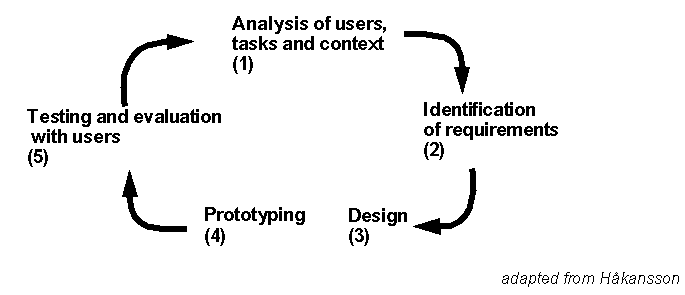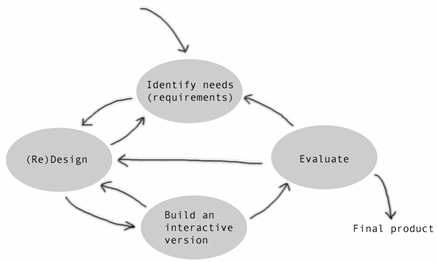Participatory design: Difference between revisions
m (→References) |
m (→Definition) |
||
| Line 2: | Line 2: | ||
== Definition == | == Definition == | ||
From the [http://www.daimi.au.dk/research/areas/human-computer-interaction/participatory-design/ Participatory Design page / DAIMI] (14:45, 3 May 2006 (MEST)) : "Participatory design stresses the issue of cooperation within system development projects. Cooperation stresses two fundamental principles: the"egalitarian" principle which assumes that all stake-holders within a design process are juxtapositioned, all are experts in certain areas and more like novices in others; and the co-working principle which assumes that a design process is a learning process for both computer systems developers and users" | |||
Participatory or user-centred design: | Participatory or user-centred design: | ||
Revision as of 13:45, 3 May 2006
Definition
From the Participatory Design page / DAIMI (14:45, 3 May 2006 (MEST)) : "Participatory design stresses the issue of cooperation within system development projects. Cooperation stresses two fundamental principles: the"egalitarian" principle which assumes that all stake-holders within a design process are juxtapositioned, all are experts in certain areas and more like novices in others; and the co-working principle which assumes that a design process is a learning process for both computer systems developers and users"
Participatory or user-centred design:
- involves users as much as possible so that they can influence it
- integrates knowledge and expertise from other disciplines than just IT
- is highly iterative so that testing can insure that design meets users' requirements
Preece, Rogers et Sharp argue for a similar model:
References
Kensing, F., J. Simonsen, and K. Bödker (1998): "MUST - a Method for Participatory Design", Human-Computer Interaction, Vol. 13, No. 2, Lawrence Erlbaum Associates, Inc., pp. 167-198.

